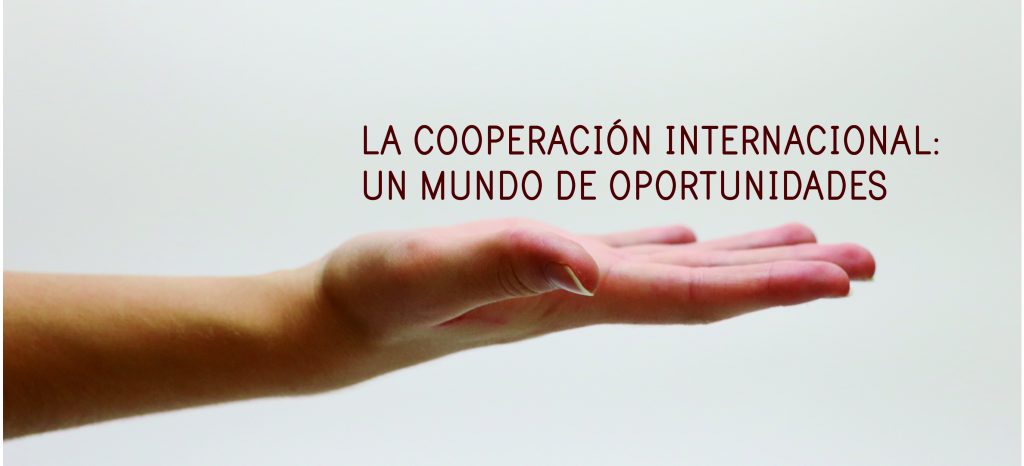Learn the steps to access and mobilize international cooperation (IC) resources and help your organization meet its objectives and goals.
There are two perspectives for its achievement:
- Application to calls (financial cooperation -reimbursable or non-reimbursable, technical cooperation, awards, donations, scholarships, internships, food or humanitarian aid).
- Establishment and consolidation of relationships with allies that support and leverage the mobilization of resources with large organizations or the development of projects; or with cooperators with whom to carry out joint actions.
Step 1: Situational analysis:
Be clear about the knowledge that the organization has consolidated, its mission and its vision. This is essential so that the search for opportunities does not go beyond the reason for existence and the organization’s actions. Then check what kind of cooperation you are looking for; To do this, identify the needs and strengths of your organization. Finally, define the amount of resources an organization can request.
Remember, success will be in concentrating on one or two specific topics. Answer: Who am I? Where am I going? What do I have? What are the areas / topics of my expertise? What do I need? And why do I need it? Also ask yourself if the required resources are for: General needs? Do you want to establish particular contacts with development actors at the international level? Do you have specific project (s) already formulated to implement? How much? and when?
Step 2: Perform a mapping:
Identify where the most relevant opportunities are and list those that respond to the needs found. You can help yourself through search platforms with personal contacting like www.nodoka.co. Remember that IC is above all a matter of relationship.
With International Consulting, you can locate cooperators, suppliers, or clients at www.makaia.org, this can unleash many opportunities for cooperation. MAKAIA is located at Carrera 43 A # 34 – 155. Torre Norte, Almacentro. Office 701. Medellín, Colombia Telephone: +57 (4) 4480374 – +57 320 7610176.
Also, you can find information available in electronic newsletters, or in virtual communities.
Step 3: Validation of alignment with the areas of action, needs and fulfillment of requirements of the organizations or calls identified..
Failure to complete this step can lead to unnecessary actions that will cost the organization time and money. Here you will decide what you really require, it is about prioritizing opportunities.
Ask yourself: What are the deadlines to apply? What type of organization is it? Is the type of cooperation the organization is seeking? Are the issues aligned? Are the areas of interest in the Same address? What are the requirements to apply for calls or create alliances? Do I meet those requirements? What criteria and processes do I need to access this cooperator or call? What type of organization is it? counterpart and my organization has the capacity to assume it?
Step 4: Presentation and / or contact.
Here it depends on the type of cooperation opportunity. For calls, recognize the specificities for completing the forms or attached documents requested, by reading the terms of reference in detail.
For the contact with potential cooperators, for the first time a specific and punctual letter of expression of interest is sent. There the organization is presented, emphasis is placed on the issues in which it aligns with the actor to whom it is addressed and the interest in promoting a meeting space is manifested. These letters should always have a call to action.
Note: There must be transparency between the missionary contents of your organization and the opportunity for cooperation, without the need to misrepresent them or adjust to the profile that a cooperator requires, since this ends up distorting the mission of the organization and weakens relationships.
Step 5: Agreement and budget definition:
It happens when the organization has won a call or has had a positive response from a donor. In this regard, the following is necessary:
- Please read the contract carefully.
- Ask about what is not clear.
- Validate the conditions.
- Check the responsibilities, scope and times for the fulfillment of actions.
- Review the topics related to intellectual property.
- In the budget, check the interest very well if it is repayable cooperation; surpluses, changes in items, the counterpart, administrative expenses and accountability.
- Carefully review in the contract topics such as: use and destination of the interest generated by the bank account, use and destination of the surpluses that arise
Step 6: Reporting.
An organized process is established for its presentation, taking into account that the donors generally provide their own formats, so it is necessary to adjust to these, have the means of verification and respect the delivery times.
Step 7: Manage communications internally and externally:
This is a transversal process to the previous steps. A communications plan must be defined.
Internally: Have institutional support to support the cooperation processes and a person who articulates communications around internal cooperation (Identification of opportunities, organization of contact databases and monitoring of each, and design of mechanisms to spread knowledge within the organization).
Externally: Define a permanent communication strategy with donors and with the CI environment, to make the organization visible and define the channels through which it will communicate (by means of informative messages, attendance at events, languages, personal relationships, and cooperation agendas). It is important that your media is professional, that you have at least one institutional website and email. For this last topic, other MAKAIA programs such as https://www.tecnologiaparaelsectorsocial.org/ can support you to have institutional email 100% free.


